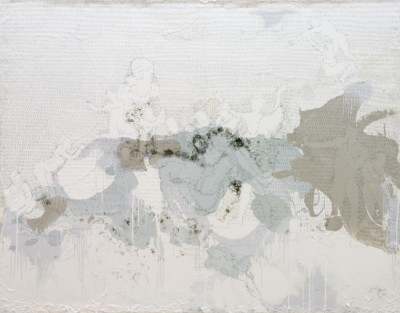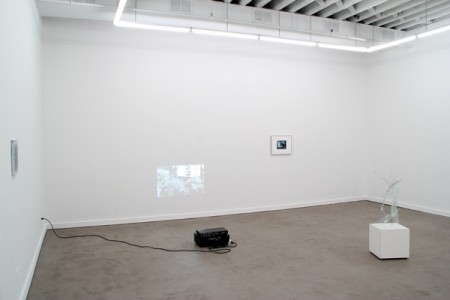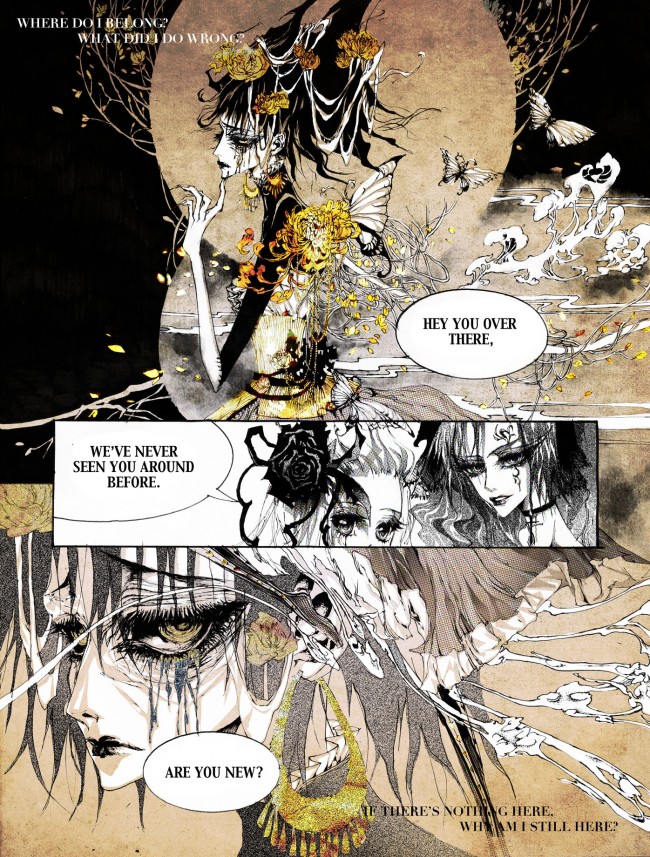It’s summertime, and, as that old song goes, the living is easy. This sentiment seems to apply to gallerists as much as anyone else. In recent years, it’s become standard practice in July and August for commercial galleries to absolve themselves from the pressures and anxieties of single-artist exhibitions by mounting group shows with works that have been made well in advance. In many cases, this simply involves displaying various pieces from represented artists, without any concern for aesthetic or thematic unity. (Often these are works the gallery already has on hand, such as unsold remnants from previous shows.) In other cases, the gallery will invite a staff member or outside curator to organize a show around a particular theme or concept. Examples of both approaches could recently be seen in three prominent West Loop galleries, with varying results.
“Summer” at Kavi Gupta
July 15 – September 3
835 W Washington
kavigupta.com
The press release for Kavi Gupta’s show, bluntly titled Summer, simply states, “a group exhibition of gallery artists.” Even though no unifying theme is articulated, many works evoke the mood of the long, lazy, dog days. For example, two winsome photographs by Melanie Schiff depict vacant scenes that might be inhabited by restless teens on summer break, the type looking to escape conventional community and culture. Circle and Branch depicts a rusty steel object in an overgrown bramble, while The Mirror is a double-exposure of a graffiti-strewn reservoir-turned-skatepark. Curtis Mann’s Night Sky, a large crepuscular grid of chemically altered photographs installed on an adjacent wall, shares a similar sense of youthful wanderlust.

The idea of summer is also suggested in the work of Angelina Gualdoni, albeit in a completely different way. Her three large, untitled abstract paintings (made with acrylic and dye on canvas) utilize lurid oranges, blazing ochres, and soot grays to create patchy compositions that suggest the intense heat generated from both natural and industrial phenomena. Nearby, more photos by Mann function like a blast of AC to Gualdoni’s inferno, each featuring an abstracted white form on a blanched lavender ground.
The exhibition is rounded out with a trio of spartan yet elegiac sculptures by Theaster Gates, in which common household objects are encased in blocks of pale cement, along with a trio of scrappy mixed-media paintings by recent SAIC grad Antonia Gurkovska. These works are united by an emphasis on process and materiality, and while both are compelling, they seem to belong in a different show entirely. Summer would have been more successful had the season itself served as an overtly unifying theme for the entire exhibition.
“Untitled Document” at Tony Wight
June 24 – July 30
845 W Washington
tonywightgallery.com
Untitled Document, at nearby Tony Wight Gallery, offers something far more cohesive. This exhibition features seven artists, three of whom are affiliated with the gallery (Josh Kolbo, Barbara Kasten and David Schutter ), and four who are not (Andrew J. Greene, Nazafarin Lotfi, Sean Raspet and Justin Swinburne).
This show doesn’t have a curatorial theme so much as a general tone, marked by reticence, neutrality and blankness. The press release is even terser than Gupta’s; it simply lists the artists and provides the exhibition dates and gallery hours.
Although the works are in a variety of media, at first glance they seem so aesthetically similar that they could have all sprung from the studio of a single, distraction-prone artist: everything is small-scale, compositionally reduced, and predominately achromatic. Only after spending some time with each work do substantial differences begin to emerge, turning the overall show into a surprisingly rich and multi-faceted experience.

Upon entering, you’re rudely greeted by Andrew J. Greene’s angular untitled sculpture made from shards of broken glass and hot glue. The piece elicits ambivalence; the formal arrangement is enticing, while the harsh materiality keeps you at bay. A similar severity is manifest in the two small Polaroid photographs by Barbara Kasten, Construct XB and Construct LB/1. These images explore the play of light, shadow and reflection on obdurate materials like glass, mirrors and steel, resulting in hard-edged geometric abstractions in a palette of pale turquoise, muted salmon, cool ivory and inky black. The fact that these works were made in 1982 is particularly noteworthy – they anticipate the current trend of photographic abstraction by almost three decades, but they look as fresh as anything being made today.
Compared to the works by Greene and Kasten, Sean Raspet’s Reverse Will / Will Reverse is considerably more inviting. It consists of a short video loop of a camera’s slow movement through an outdoor architectural space. The imagery is ashen and slightly fuzzy, which creates a dreamy atmosphere, like a floating memory unmoored to any particular time or place.
The three diminutive, untitled, black and white paintings by Nazafarin Lotfi also engage in spatial play. Lotfi, another recent SAIC grad, employs a variety of techniques – sanding, scraping, spray-painting – to create nuanced surfaces that suggest a remarkable amount of depth. Compositional elements are kept to a minimum, and in some cases are relegated to the edges, which turn these ostensible abstractions into windows looking out onto ambiguous open spaces.
Superficially, the graphite-colored monochrome painting by David Schutter, after AIC W x 7, seems to have much in common with Lofti’s work. Yet prolonged viewing reveals far more differences than similarities. Schutter’s work is essentially a meta-painting, an attempt to remake an unspecified canonical art historical work (Watteau, perhaps?) through memory and observational studies. The painting has a delectable surface that has been built up through multiple layers, along with incredibly subtle tonal variations. While Lofti’s work is sparse and vacant, Schutter’s work is unbearably full; loaded with paint, historical/temporal weight, and melancholy.
“Never Let Me Go” at Rhona Hoffman
May 20 – July 22
118 N Peoria
www.rhonahoffman.com
The recent group show at Rhona Hoffman, Never Let Me Go, is substantially different from the shows at Gupta and Wight. For one, it’s curated by a noted external figure: local curator/writer/teacher Terry Myers. Secondly, it consists entirely of figurative work, mostly painting, which is refreshing in a year when abstraction is ubiquitous. Third, the show’s theme is inspired by a work of contemporary literature, the eponymous novel by Kazuo Ishiguro, in which three childhood friends “slowly discover the astonishing circumstances of their humanity.”
Most pieces in the show explore the relationship between the human figure and surrounding space in ways that are formally exciting and emotionally charged. Additionally, this exhibition provides a rare opportunity to see the work of a number of noteworthy artists who rarely show in the Chicago area.
The most dazzling works are the large, brash, post-expressionist paintings by Andre Butzer, which suggest what Emile Nolde might have made on crack-cocaine. One untitled work depicts a quartet of cartoonish figures on a cerulean ground. Two of them have large eyes and wide smiles, while the other two have skeletal physiognomies. The slap-dash brushwork, garish color and deceptively cute imagery suggest a manic, frenzied state. The other Butzer painting, ironically titled Don’t Be Scared, is just as troubling – a large, oily black tarantula on a fragmented, multi-hued ground, poised to devour everything in sight.
Psychic unease is also manifest in Folkert de Jong’s The Sleeper, The Talker and The Dancer, a large pale sculpture wherein two life-size human heads with stunned facial expressions are embedded in a tree-like stump. It’s the type of thing one might encounter in a surrealist fairy tale, or in a dystopian sci-fi landscape. The close proximity of John Wesley’s jaunty pop paintings provides a sharp contrast. One, Landscape With Canon, depicts the titular object releasing a puny little drop of liquid onto a large body of water, which wryly suggests the onset of creative and/or sexual impotence. The other painting depicts a row of naked women, who almost dissolve into an arabesque pattern.
Pattern of a different sort is evinced in Jeni Spota’s Dicey, a small, fetching oil painting that incorporates miniature playing cards, thick impasto, and Renaissance imagery to invoke fate and otherworldly grandeur. The remaining works, while not as captivating as the aforementioned, still merit mention: Nicola Tyson’s painterly celebration of gawkiness; a mysterious plant-like sculpture by Rona Pondick; and Lari Pittman’s psychedelic, mixed-media extravaganza.
In discussing these three shows, it’s tempting to somehow rank them in terms of quality. But given the divergent intentions and contexts, it’s impossible to do. Hoffman’s is probably the most dynamic, while Wight’s the most focused and taught, and Gupta’s the most seasonally apposite. In other words, each offers a singular reward. The cumulative effect of seeing all three demonstrates the diverse sensibilities within contemporary art today.







